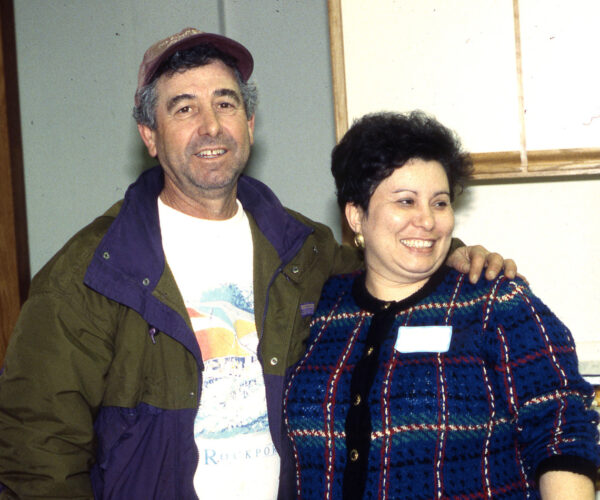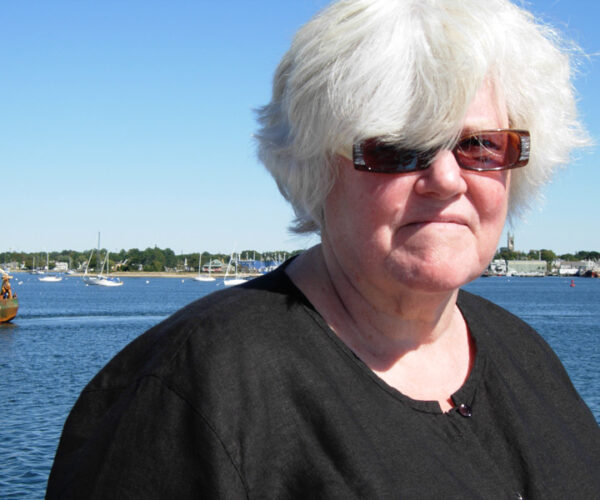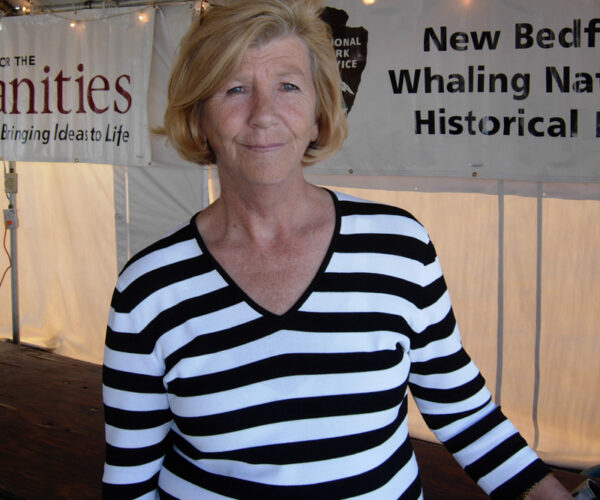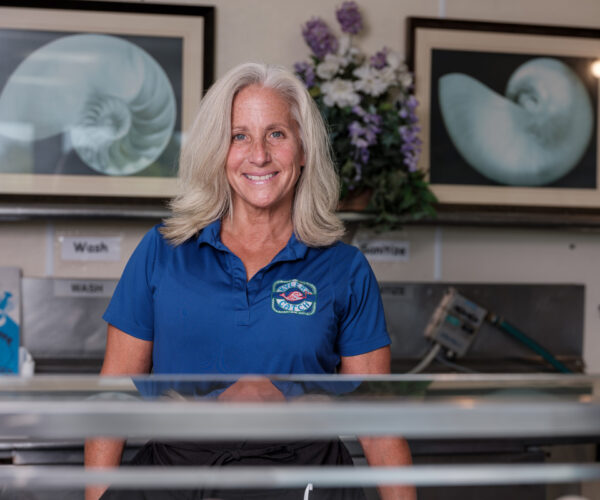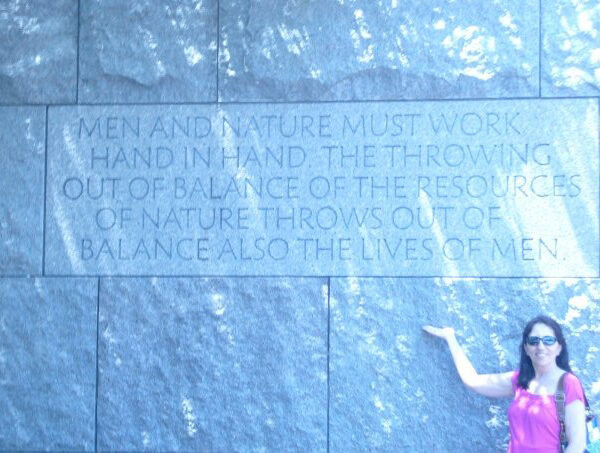In the Community
Because danger and uncertainty are intrinsic to fishing, women in fishing families develop a strength born of the need to hold down the fort while fishermen are out to sea. Women in fishing families often become advocates, bringing the concerns of fishing communities to elected officials. Women led efforts to establish the 200-mile limit, prevent oil drilling on Georges Bank, create a health insurance program for fishing families, and improve safety at sea. Women have been and continue to be instrumental in seafood marketing efforts including cookbooks, seafood festivals, and branding campaigns. In addition, many women are employed in social service organizations that serve the fishing community providing safety training, health insurance, translation services, and more.
Women’s Organizations
As part of their role in community building, fishermen’s wives formed groups to provide fishing industry input during local, state, federal, and international meetings. This was and is particularly important to fisheries management since impacts of regulations on communities is widely recognized as a critical consideration for efficacy and equity.
The Gloucester Fishermen’s Wives Association
Since 1969 the Gloucester Fishermen’s Wives Association (GFWA) has actively promoted the New England fishing industry. GFWA campaigned for the 200-mile limit and led the fight to ban oil drilling on Georges Bank. They document and present the impact of regulations on their community; they educate the public about local seafood through cooking demonstrations and cookbooks; and they were important in the development of the first healthcare program for fishermen.
PHOTO BY SHAREEN DAVIS
Women of Fishing Families
Women of Fishing Families (W.O.F.F.) is a volunteer organization dedicated to supporting Cape Cod fishing families and the greater fishing community on Cape Cod by providing an active support network, community assistance funds, and fisheries education.
PHOTO BY SHAREEN DAVIS
United Fishermen’s Wives
In 1968, the wives of fishermen in New Bedford established United Fishermen’s Wives to bring fishermen’s concerns to elected officials. Along with women’s organizations in other ports, they actively lobbied for a 200-mile limit to prevent foreign boats from fishing US waters. The 200-mile limit was passed on March 1, 1977. The group also promoted New Bedford seafood with cookbooks and marketing efforts and helped organize the annual Blessing of the Fleet.
PHOTO BY SIU ARCHIVES
Ladies’ Branch of the Port Society
Founded in 1833, the Ladies’ Branch of the Port Society has long supported the Seamen’s Bethel and Mariner’s Home. It was a member of the Ladies’ Branch who donated a family home in 1851 to be used as lodging for transient mariners, which became the Mariner’s Home. In addition, they provide scholarships to needy students, particularly those who are descendants of mariners, and work with the Port Society to present the annual Fishermen’s Memorial Service.
PHOTO BY PHIL MELLO
CLICK IMAGES TO ENLARGE
Speaking Out:
Women as Advocates
Marjorie Orman, owner of Solveig’s settlement house, has always been a sounding board for her scallop fishermen clients. In the mid-1990s crippling and misguided regulations closed more than a third of their traditional fishing grounds, despite the fact that scallops in those areas were large and plentiful. Orman convinced the fleet to hire a lawyer who submitted a successful legal brief asking the Secretary of Commerce to allow fishermen into the closed areas to assess the abundance of scallops. Thus began an industry-funded survey in partnership with scientists at UMASS Dartmouth that proved the abundance of scallops, opened the closed areas, and continues to this day, making New Bedford the nation’s most valuable fishing port since 2001.
PHOTO BY PHIL MELLO
In 1998, Deb Shrader, whose husband is a scallop captain, established Shore Support to provide a voice for rank-and-file fishermen and their families in the debate about fisheries regulations. She also conducted socio-economic research to document the impact of regulations, testifying before the United States Congress. Additionally, she helped to establish the Fishermen’s Emergency Relief Fund to support fishing families in the aftermath of at-sea tragedies.
PHOTO BY MARKHAM STARR
Time Magazine named Niaz Dory a Hero for The Planet for her work with small-scale, traditional, and indigenous fishing communities to fight against the corporate takeover of the ocean and privatization of the marine environment and fishing rights. As the Coordinating Director of NAMA and the National Family Farm Coalition, she has assembled a team that helps organize fishing communities and farmers to work towards a more equitable, and ecologically responsible, food system.
PHOTO BY SHAREEN DAVIS
For almost a half century, Angela Sanfilippo has spearheaded campaigns to protect the physical and economic health of commercial fishermen, their families and the communities in which they live. As longtime president of the Gloucester Fishermen’s Wives Association, she has worked to protect the fishing grounds from oil drilling, liquid natural gas pipelines and now, offshore wind farms.
PHOTO BY SHAREEN DAVIS
Harriet Didriksen (1943-2019) was a prominent fisheries advocate, boat owner, and the owner and operator of New Bedford Ship Supply, established by her uncle in the 1930s. Harriet was from a fishing family and had an encyclopedic knowledge of the industry. She valued cooperative research, donating supplies and food to research trips. Harriet worked with politicians to advocate for reasonable regulations based on real science and to convince mangers to open closed fishing areas.
PHOTO BY SAM MURFITT



